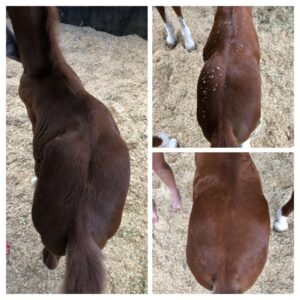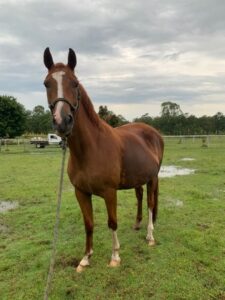How to buy a horse: a step-by-step guide
Ready to buy a horse? Learn the costs, care tips, and steps to find your perfect equine partner.
Read more1 June 2023
Australian Physiotherapy Association, a trusted partner of Petcover has provided the below case Study of Anthony a foal.
Read on to hear about his story, from diagnoses, surgery, physiotherapy treatment, and recovery.
Anthony was a week old when he was referred to a qualified physiotherapist. He was born with severe spinal scoliosis due to complications during the latter part of his gestation period.
Upon delivery, the vets x-rayed his spine to see if there were any significant structural problems that might have resulted in him being put to sleep. Thankfully, there weren’t. However, there was little the vets could offer him medically, so he was referred to a physiotherapist.

Upon initial assessment, Anthony was found to have a significant scoliosis of his thoracolumbar spine. This resulted in severe tightness of the spinal muscles along his back, ribs, and pelvis on the left. He also had moderate wind-sweeping of his front legs from his knees downwards, and pressure sores on his right stifle due to his inability to change position.
Physiotherapy aims to restore normal, functional movement patterns. Due to his tight muscles, Anthony was unable to move freely or change his position easily. When muscles are very tight, they are very painful. It is essential to help reduce pain to restore movement and function.
Anthony was initially provided with manual therapy. He was given spinal mobilisations and soft tissue release. Together, these techniques reduce discomfort and increase flexibility. He received kinesiology taping too. The tape was applied to reduce the tone (tightness) in his muscles on the left side of his trunk.
Anthony’s owner followed a daily exercise program, ensuring that he received regular stretching, soft tissue release, and taping. Anthony became very skilled with his dynamic mobility exercises (aka carrot stretches) from a very young age!
By 5 weeks old, it was safe for him to have some paddock time with his Mum. This was a great achievement.
As well as physiotherapy, Anthony was also referred to the farrier for corrective trimming of his hooves to help encourage his front legs to grow straight.
Over the next 8 weeks, Anthony significantly improved. His scoliosis reduced from 25-degree lateral flexion to 3 degrees, and his flexibility, muscle strength, and trunk stability continued to improve. As a result of regular corrective farriery, the wind-sweeping resolved. Anthony was able to move freely and consequently, his pressure sores healed.
Over the next six months, Anthony continued with his progressive physiotherapy program. By the time he was weaned at six months old, the severely scoliotic foal had significantly improved. He was strong, flexible, and straighter!!
Anthony is now 3 years old. Whilst he is left with some mild skeletal deformities, he is otherwise healthy and is expected to go on to lead a very happy and healthy life.

By Lynne Harrison BSc (Hons), MSc (Vet. Phty)
Physiotherapist
Permission granted by Kate Hunter, Owner
*This case study is provided by and published on behalf of the Australian Physiotherapy Association. The content contained or made available through this case study is not intended to provide and does not constitute medical advice nor it can be relied upon as care, cure, or treatment for any medical condition. Always seek the advice of your qualified veterinary provider with any questions you may have regarding a medical condition or treatment.
**Claims, coverage, and premiums will vary depending on each individual claim and cover eligibility criteria and terms and conditions will apply. For further information please refer to your individual certificate of insurance and product disclosure statement. PDS is available on the product page of our website.